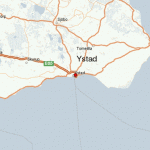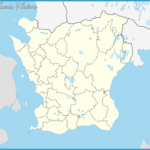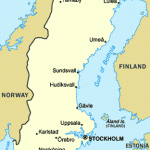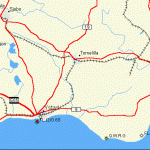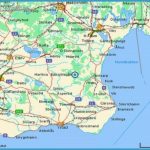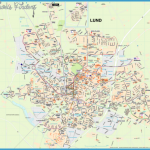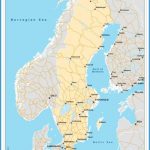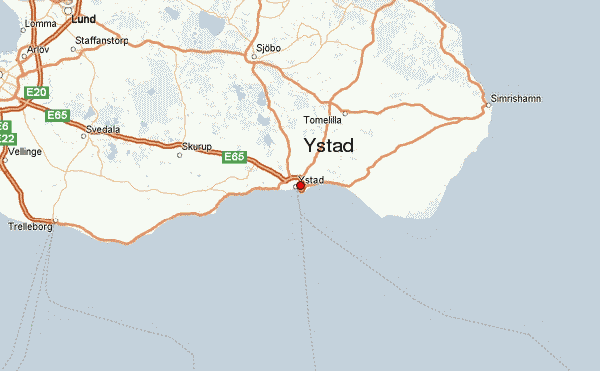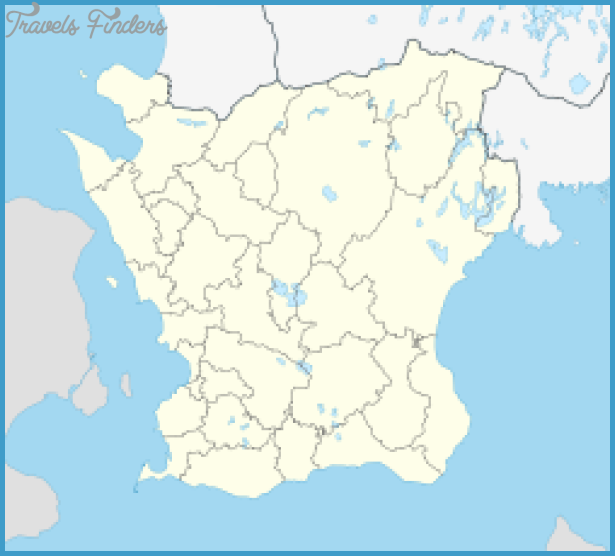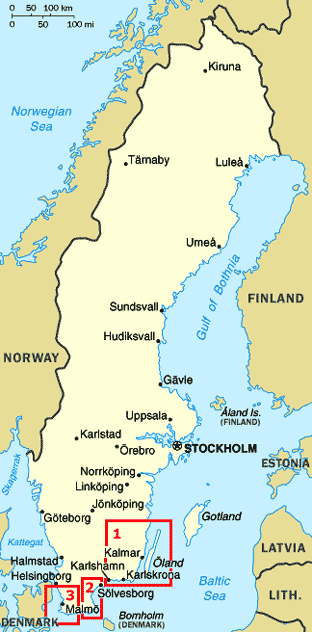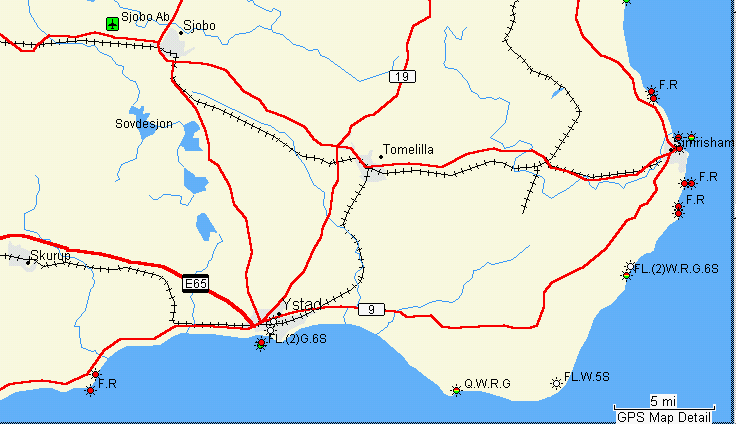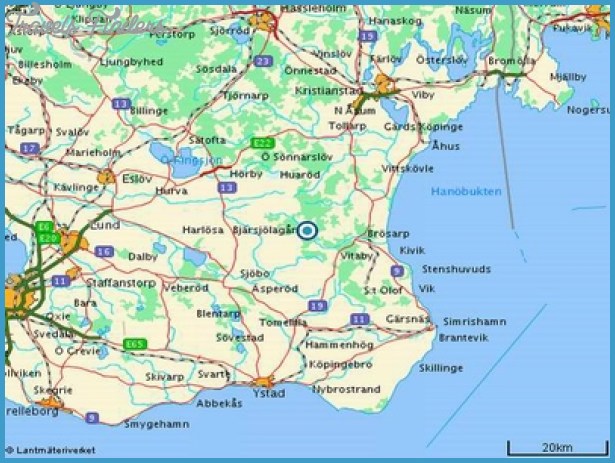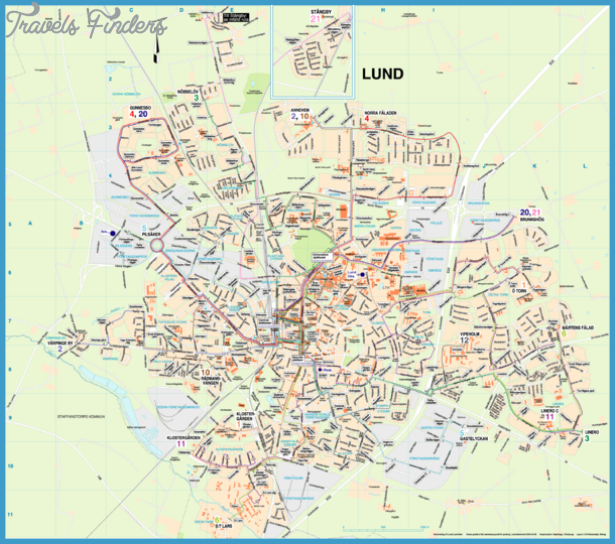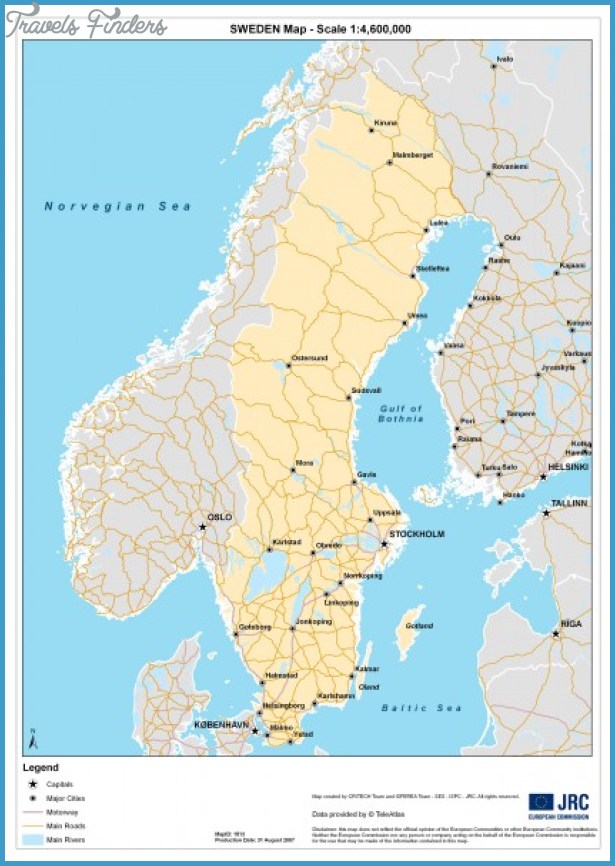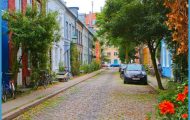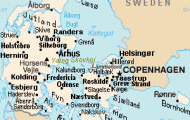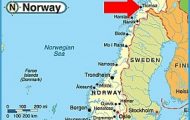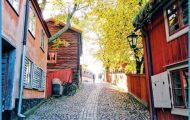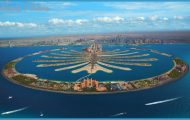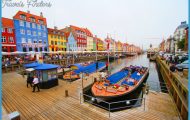Province: Malmohus Ian.
Region: SkSne.
Altitude: sea level. Population: 14,000.
Postal code: S-27100. Telephone code: 04 11.
HOTELS. Ystads Saltsjobad, 220 Pensionat Prins Carl, 17 Backagard Gastrum, 11b.- YOUTH HOSTEL.
Ystad, on the S coast of Skane,has a history going back to the 13th c. In medieval times, it was one of the principal herring-fishing ports in the Baltic. It enjoyed a great upsurge of prosperity when Napoleon imposed his continental blockade and many of the town’s inhabitants carried on a very profitable smuggling trade. From 1664 on, the Ystad mail-boat Lilia Jagaren provided Sweden with a regular link with the European mainland. The town now has daily ferry services to the Danish island of Bornholm and to Poland.
SIGHTS. The town has preserved many fine medieval half-timbered houses. The Old Town Hall in the Stortorg is a building in Empire style (1838-40) erected over a 14th c. cellar with groin vaulting, a relic of the original Town Hall, destroyed by Swedish troops in 1 569. The cellar is now a bar, reverting to its original function. Also in the Stortorg is St Mary’s Church, a familiar landmark with its copper-sheathed steeple (16th c.). The watchman still looks out over the town from the tower, and his horn sounds four times every hour throughout the night. In the 14th c. a tower was added to the church, but this collapsed during a storm and destroyed part of the nave. With assistance from the Danish King Frederik III, the church was rebuilt and enlarged to twice its previous size. The interior is richly decorated, with fine wood-carving.
Farther N is another 13th c. church, St Peter’s, adjoining which is a Franciscan friary (Grabrodraklostret), the best-preserved monastic house in Sweden after Vadstena (290). Originally built in 1267, it was used after the Reformation (c. 1530) as a hospital, a brandy distillery and a warehouse, The old Latin School, founded in the 1 5th c„ is now a grammar school (gymnasium). SE of the Stortorg, at No. 23 Dammgatan, is the Charlotte Berlin Museum, a fine town house (1 9th c. furniture and furnishings). Nearby are the Museum of Art and the Dragoons Museum, both in the same building. Near here, too, stands the New Town Hall, a mansion in Empire style built in 1 812 for a prosperous local merchant, C. M. Lundgren.
At the corner of Stora Ostergatan and Pilgrand is Pilgransgarden, a magnificent half-timbered building (c. 1500), originally a warehouse (restored 1947). Aspelinska Garden, at the corner of Ostergatan and GSsegrand, consists of three half-timbered buildings built around a courtyard; it was erected in 1778 for a goldsmith named Jonas Aspelin. At the corner of Stora Norregatan and Slad-dergatan is the Brahehus, a 16th c. mansion built by the Brahe family, who had large possessions in this area and enjoyed great political influence. The most decorative half-timbered house in Ystad is the Anglahus, a 17th c. building which belonged to a civic dignitary named Hans Raffn. The facade is decorated with the carved angels which give the house its name.
SURROUNDINGS. 5 km (3 miles) NW of the town is the 12th c. church of Bjaresjo (wall paintings). 15 km (10 miles) N is Orups Stenhus, one of the oldest fortified castles in Sk3ne (c. 1490). It strongly resembles Glimmingehus Castle (236). 17 km (10 miles) E is the 12th c. Valleberga Kyrka, the only surviving circular church in Skne. It has the same ground plan as the circular churches on Bornholm (70), which at one time belonged to the same diocese. The 12th c. font was the work of a Gotland stonemason. A free-standing defensive tower of the late medieval period is now a museum.

